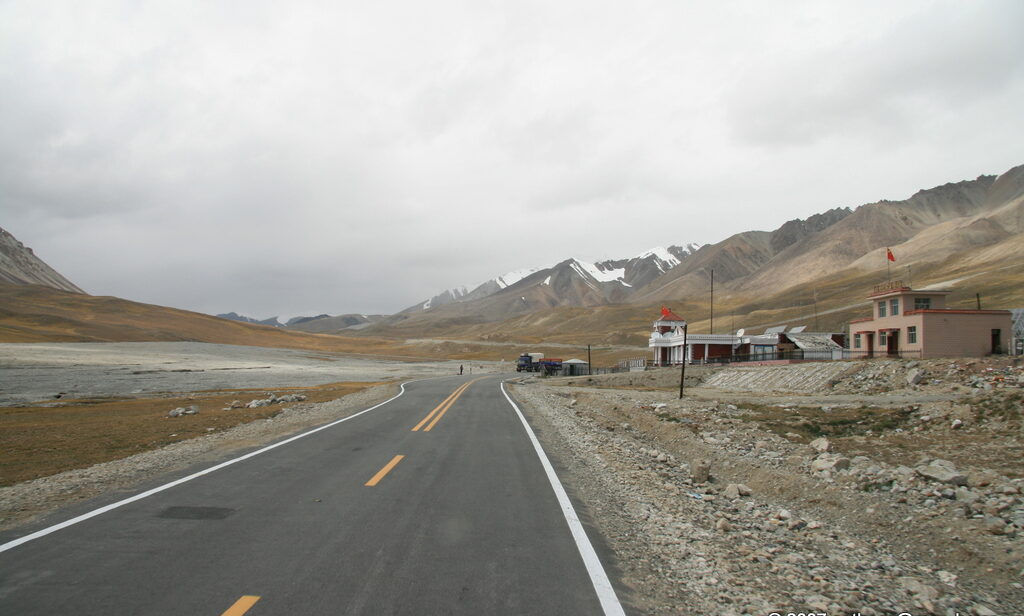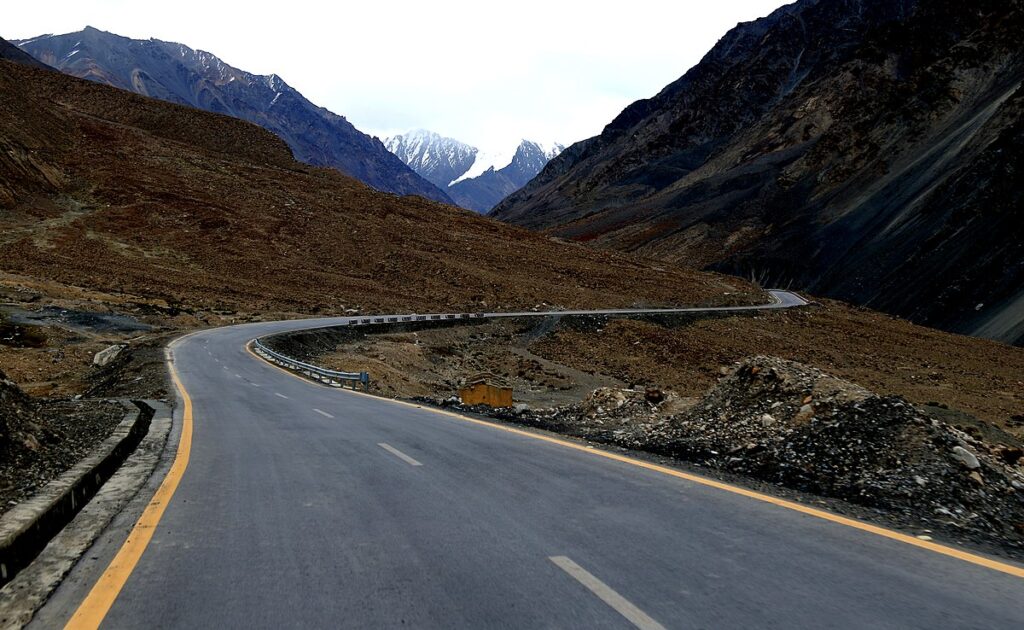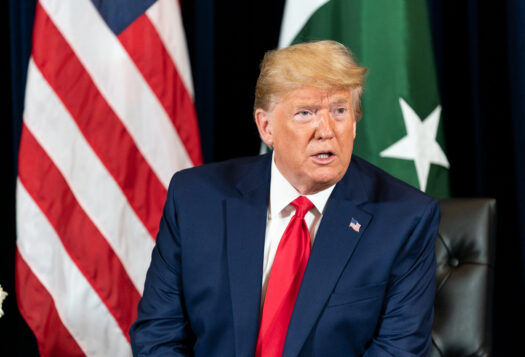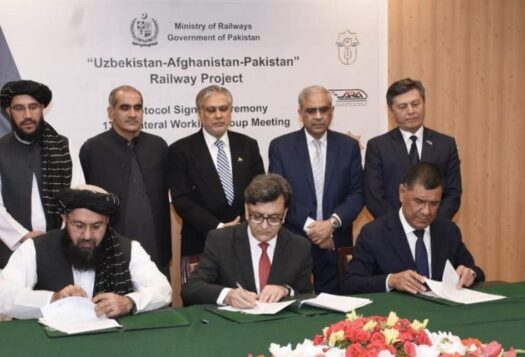
The U.S. withdrawal from Afghanistan signaled a shift in Washington’s priorities with a new focus on China. However, as Washington pivots towards the Indo-Pacific, growing Chinese influence in South and Central Asia stands to undermine U.S. strategic aims in the region. With new economic, diplomatic, and security engagements in Afghanistan and Pakistan, Beijing stands to not only expand its over-land access to Central Asia and European markets, but also gain greater access to the Indian Ocean Region (IOR).
While connecting South and Central Asia presents significant challenges, Beijing’s efforts warrant Washington’s attention. China’s increased reliance on the IOR for growing trade and energy needs may further increase its naval presence in the Indian Ocean. This could disrupt the status quo, otherwise, maintained by the United States and its allies in the larger Indo-Pacific region.
Beijing Moves In As Washington Moves Out
The absence of U.S. engagement has allowed Beijing to advance its interests and capitalize on the power vacuum in Afghanistan. In January, Beijing signed a major oil extraction and refining deal with the Taliban, marking it the group’s first significant foreign investment since coming to power in August 2021. China has bolstered infrastructure and investment deals with Taliban, urged the West to lift sanctions and release frozen Afghan funds, initiated trade across Afghanistan, and reduced tariffs on Afghan imports. China’s consistent use of economic diplomacy and political engagement towards the Taliban, despite security breaches across the CPEC relevant Pakistan-Afghanistan border, could establish a certain political leverage over Taliban, necessary to bring them on board not only for BRI but ensuring security of Chinese investment in Afghanistan.
By far, Afghanistan’s security situation remains a major challenge for China and its ambitions to connect South and Central Asia through the Belt and Road Initiative. While Beijing aims to stem the flow of militancy, radical ideologies, and narcotics into Central Asia and Xinjiang, it also seeks stability in Afghanistan to achieve regional connectively through the BRI and gain access to the Indian Ocean. For example, China has invested in a regional link across the Xinxiang region, which is a key connecting point for CPEC and BRI routes situated near the Wakhan Corridor and thus joins Afghanistan, Pakistan and Tajikistan with China. Near this route, Beijing aims to keep the East Turkestan Islamic Movement (ETIM) away from this area, curtail ISIS-K gaining momentum inside Afghanistan, and is wary of TTP resurgence across Afghanistan-Pakistan border areas.
China’s consistent use of economic diplomacy and political restraint towards Taliban, despite security breaches across the CPEC relevant Pak-Afghan border, could establish a certain political leverage over Taliban, necessary to bring them on board not only for BRI but ensuring security of Chinese investment in Afghanistan.
In attempts to create strategic synergy from regional states on counterterrorism, China has continued engagement with Taliban, participating actively in multilateral forums to generate regional consensus for political order, security, and humanitarian intervention amongst Afghanistan’s neighbors. Contrary to the United States, China’s diplomatic mission remained on the ground despite dire security concerns amid the U.S. troop withdrawal. In fact, as the United States has turned its attention away from Afghanistan, Beijing chose to “beef up” its relations with the Taliban to advance its interests in the country. Sustained political commitment and infrastructure investment that integrate Afghanistan into existing BRI projects in South and Central Asia would confer huge economic gains, along with influence over strategically significant areas.
China’s Economic Diplomacy to Project influence in South and Central Asia
As the United States left Afghanistan, its attention towards Pakistan also diminished. Amid a cooling in ties, Washington made clear to Islamabad it had downgraded the relationship. At the same time, China has invested $60 billion in Pakistan over the last decade through the China-Pakistan Economic Corridor (CPEC). BRI routes near Gwadar port and Trans-Afghan rail links link Central Asian and Afghanistan supply lines to Pakistan’s ports and open China as an export destination for an otherwise landlocked region. With a phenomenal reduction in transit time and an increased capacity of goods transfer across the region, the combined trade volume across South Asia to Central Asia may reach $26 billion in a decade or so.
Along with economic benefits, greater influence and presence in Pakistan opens strategic options in the Indian Ocean region. Once complete, CPEC projects would allow Beijing direct overland access to the Indian Ocean, a rising arena for competition in the Indo-Pacific. Greater influence over trade routes, emerging geopolitics, and security dynamics could translate into additional access points to project power and increased naval presence in the Indian Ocean.
Around 80 percent of China’s imported oil transits through the Indian Ocean and Malacca Strait, and 95 percent of its trade with the Middle East, Africa, and Europe passes through the Indian Ocean. CPEC could give China the shortest access to Middle East and Africa via Gwadar, and reduce its reliance on the Malacca Strait for energy and trade transits. Despite major security and political hurdles faced by CPEC projects resulting in stagnation, China just reopened dialogue to invest $58 billion for the Kashgar-Gwadar rail link. This would further reduce Beijing’s reliance on western dominated routes, bypassing Malacca and shipping lanes through Pacific, hence depicting the geopolitical undertones of BRI.

Securing the vital Sea Lines of Communication (SLOCs) through IOR is also critical to China. Protecting SLOCs may result in increasing an already accelerating PLAN vessel patrolling in Indian Ocean. The dual-use potential of Gwadar has already raised concerns that China could base naval ships in Pakistan, posing a significant threat to U.S. influence over Indian Ocean waters.
The more China invests in Afghanistan and Pakistan through CPEC and BRI, the more these critical regions will rely on China. Increased connectivity and integration of CPEC and BRI routes from Central Asia to South Asia via Afghanistan, could increase China’s reliance on Indian Ocean routes for its energy and trade needs. This could heighten the threat perception of the United States and its allies including India towards China’s potential naval dominance in IOR and disrupt the geopolitical calculus in the region, resulting in increased naval competition in Indian Ocean.
China’s Competitive Edge over the U.S. Indo-Pacific Strategy
Beijing’s increased investments, diplomatic outreach, and security presence in Afghanistan and Pakistan have forged inroads for China where Washington used to be. Unlike the United States, China so far has refrained from asserting military influence and relies on soft power instead. It recently brokered a diplomatic deal between arch-rivals Saudi Arabia and Iran to call for a truce over the Yemen crisis, just as it is taking a lead to bring regional consensus over Afghanistan and is engaging with the Taliban to foster a political and security situation viable for its BRI and strategic access points to IOR. This is strikingly different from the United States’ approach of non-engagement with or sanctioning of rival regimes.
The more critical the IOR becomes to China’s energy and trade routes, the more assertive it is likely to become on securing these lines from intervention. A naval blockade of the Strait of Malacca is one event against which China must hedge itself from, due to its heavy reliance for energy and trade needs from the Middle East and Africa. China’s increased naval presence in the Indian Ocean seems likely to secure SLOCs that are vital to its energy and trade needs. Pakistan’s Gwadar deep sea port can be a launching base for PLAN vessels. This is particularly relevant in case China-Pakistan threat perceptions on CPEC and the IOR increase against growing U.S.-India’s Indo-Pacific economic and defense partnership.
The more critical the IOR becomes to China’s energy and trade routes, the more assertive it is likely to become on securing these lines from intervention.
Pakistan is also investing in consolidating its green-water navy to offset Indian naval presence in IOR. Islamabad’s diversified and historic defense ties with China are likely to expand further in near future. China has been steady in its investments for developing systems for deep-sea investigation, ocean drilling, seafloor resources assessment, and marine tasks support in Indian Ocean. Complementing Chinese subsurface presence in the Indian Ocean can be used to gather intelligence, and patrol international waters. Beijing’s recent plans to set a radar base in Sri Lanka for surveillance of movements near Diego Garcia and the Andaman and Nicobar Islands indicates so. These defense engagements will help China to balance the U.S.-India defense partnerships aiming to transform India into a naval power along with a traditionally land based power.
As the United States shifts its focus to the Indo-Pacific, it could do well to be wary of the long-term consequences of China’s strategic use of economic diplomacy and connectivity via Afghanistan, Pakistan, and Central Asia to increase its presence in IOR. Moving beyond a security based partnership with Pakistan, for example, is likely to make Islamabad more inclined to balance relations between the United States and China. The United States may reconsider its strategy of non-engagement with the Taliban since China is actively investing in the political vacuum left to move strategically for its connectivity, IOR access, and political influence in Central and South Asia. Continuing with humanitarian assistance and women’s rights issues-based work in Afghanistan, both of which are much needed and a long-term investment in the Afghan people, are some areas where the United States could keep engagement alive and leverage its own long-term diplomatic gains against China.
***
Click here to read this article in Urdu.
Image 1: Karakoram Highway via Wikimedia Commons
Image 2: Khunjerab Pass via Wikimedia Commons


